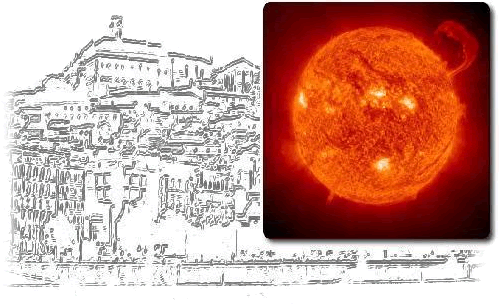|
|
|
|
|
|
|
|
|
|
|
|
|
Andrey Tlatov, Mr. - PhD |
|
Kislovodsk Mountain Astronomical Station, Main Astronomical Observatory of Russian Academy of Sciences, Kislovodsk, Russia |
|
* |
|
|
|
|
|
Session 4 - Poster |
|
Numerical processing of sunspot images using the digitised long-term archives |
|
A.Tlatov, N. N. Skorbez, Kislovodsk Mountain Astronomical Station, Main Astronomical Observatory of Russian Academy of Sciences |
|
|
|
We present the results of applying our numerical algorithms for
identification and parametrisation of sunspots from a long series of photographic
observations made in white light during the period of time from 1918 to 1972 by the
Royal Greenwich Observatory (RGO) and Kislovodsk astronomical station from 1954 to
2014. The main purpose of this work was creating a catalogue of individual sunspot
parameters, which is a step forward with respect to the previous
catalogues of this kind. The RGO archive contains about 26000 photographic plates,
and Kislovodsk more 18500 plates. All plates digitised with the resolution that
corresponds to the Sun's image radius having approximately 1600 16-bit pixels. We
have developed special numerical algorithms and implemented them in our image
analysis software. The first stage of processing each photographic plate consists of
identifying the solar disc image and projecting onto this image the heliographic
coordinate grid corresponding to the date and time of observation. Then, we
calculate the local Quiet Sun Level (QSL) brightness, which is used for determining
the local contrast threshold for sunspot identification and localisation. Our
software includes also manual screening of the automatically localised sunspots,
which was used at the last stage of the solar image processing to filter or remove
unavoidable photographic plate artefacts. In total, we have localized about 240
thousand ind ividual sunspots in RGO archive and about 200 thousand sunspots in Kislovodsk data.
The calculated areas of these spots were compared with the results of manual
measurements of these areas (www.ngdc.edu) and showed high correlation (R~0.98).
We performed the analysis of the distributions of the leading and trailing
sunspots. In the distribution of the leading sunspots have a maximum area of S ~
120-150 mhm. In the distribution trailing sunspots such maximum is absent. |
|
|
|
|
|
|
|




 









 |



